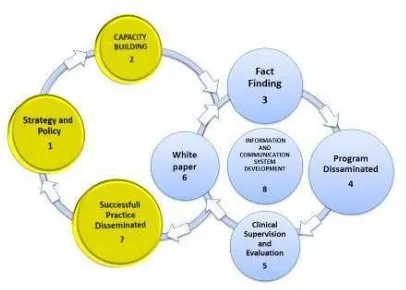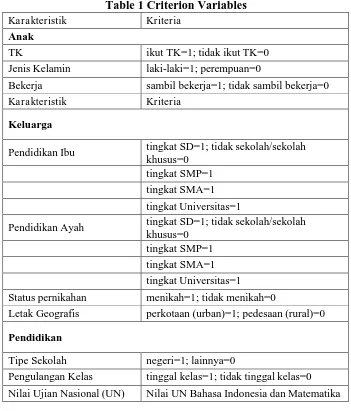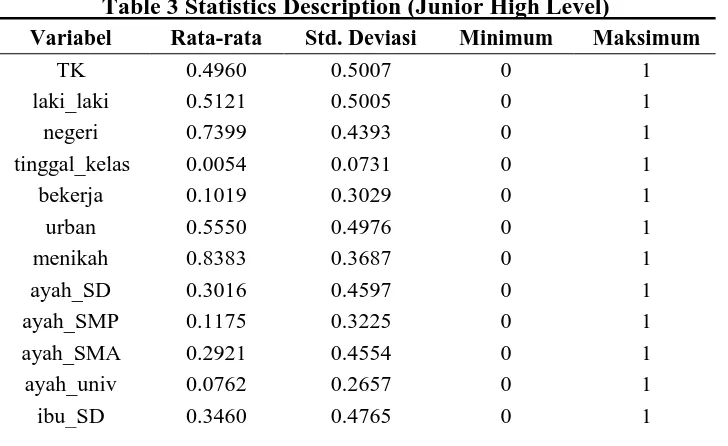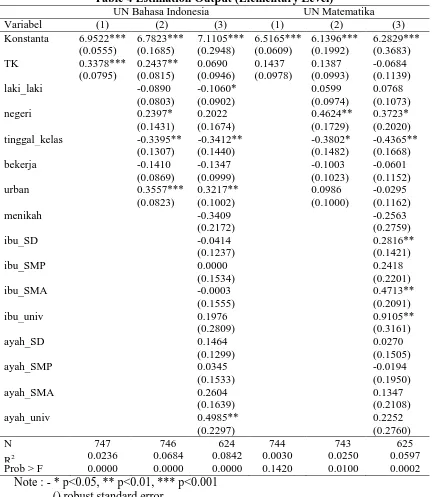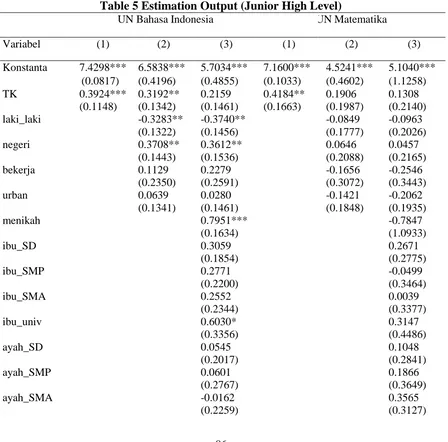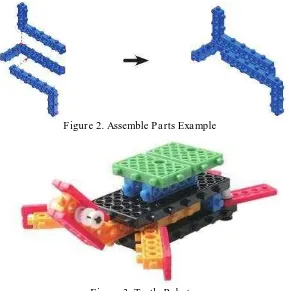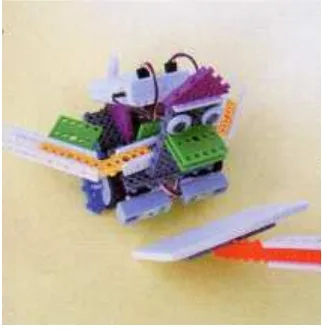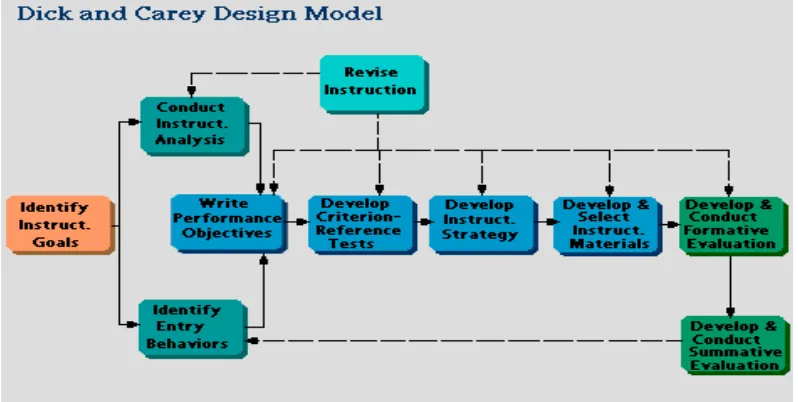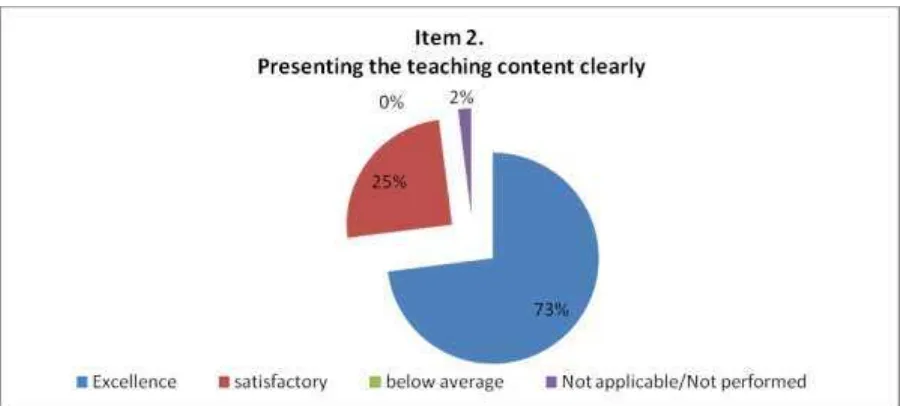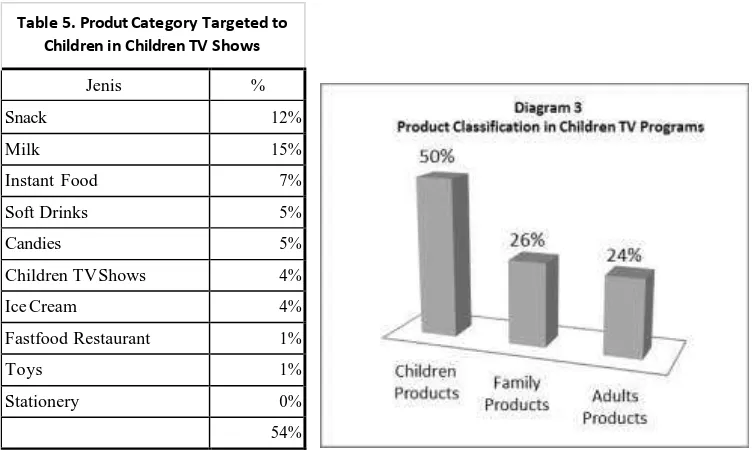THE 2014 INTERNATIONAL CONFERENCE
OF EARLY CHILDHOOD EDUCATION
Editor: Vina Adriany
NEGOTIATING PRACTICES
PROCEEDINGS
NEGOTIATING PRACTICES
OF EARLY CHILDHOOD EDUCATION
THE 2014 INTERNATIONAL CONFERENCE
OF EARLY CHILDHOOD EDUCATION
PROCEEDINGS
NEGOTIATING PRACTICES OF EARLY CHILDHOOD EDUCATION The 2014 International Conference of Early Childhood Education
ISBN : 978-602-99635-1-9
Editor : Vina Adriany
Desain sampul : Endang Dedih
Tata letak : Yusman
Penerbit
Program Studi PG PAUG Jurusan Pedagogik Fakultas Ilmu Pendidikan
WELCOMING NOTES
I would like to welcome all delegates and invited guests at the 2014 International Conference of Early Childhood Education in the Indonesia University of Education (UPI), Bandung, West Java, Indonesia.
This conference is held as part of the celebration of UPI‟s 60th Dies Natalis. The theme chosen for our conference is Negotiating Practices of Early Childhood Education. We are aware that nowadays there are different practices of early childhood education that compliment each other in one way but it may also contradict in another way. Our hope is this conference will provide a space where those different practices can communicate with one another.
This conference can only be possible with assistances from so many institutions and individuals. We are grateful for the support provided by Rector of UPI, Dean of Faculty of Education and his staffs, School of Postgraduate Studies, as well as hard work of staffs in our program, Early Childhood Education Teacher Education Program (PG-PAUD) and our students.
We also would like to extend our deepest gratitude to all our keynote speakers from Lancaster University, UK, Gothenburg University, Sweden, Flinders University Australia, National Dong Hwa University, Taiwan, University of Malaya, Malaysia, as well as from Indonesia University of Education. We also thank our presenters and participants from various places in Indonesia as well as from oversea like Malaysia, Australia and Oman.
We wish you a wonderful conference.
Head of PGPAUD-Program
FOREWORD
This proceeding is based on papers presented by participants in our international conference of early childhood education (ECE). The theme chosen for this year is
―Negotiating Practices of Early Childhood Education‖. The theme is based on understanding that we live in a hybrid world where different values, ideologies, practice including those of in early childhood education interact; compete yet they also complete one another.
Papers presented in our conference reflect this theme. This proceeding is commenced by papers and extended abstract from our keynote speakers. The topic ranges from gender issues in ECE, negotiating concept of care in ECE, a cross-cultural perspective on parenting and play. The diverse topic presented in the keynote speech illuminates the richness of practices and theories of ECE.
The proceeding is divided into 13 themes. There are Philosophical Issues in Early Childhood Education; Curriculum and Assessment of Early Childhood Education; Quality and Human Investment in Early Childhood Education; Information, Communication and Technology (ICT) in Early Childhood Education; Parenting; Gender Issues in ECE; Teachers Training in Early Childhood Education; Language Development and Literacy in Early
Childhood Education; Children‟s Social and Emotional Development; Children‟s Cognitive Development; Creativity in Early Childhood Education; Multiculturalism in early childhood education; and Primary Education (Grade 1-3). Each theme is hoped to stimulate debates and discussion in ECE. All these themes take into account new trend and concept that affects the way childhood is situated and constructed.
The papers presented in the proceeding also reflect different epistemological and philosophical framework that shape each author‟s writing. It is not our aim to demonstrate which framework is the most suitable one, as we do not one to make one particular theory as the only truth in ECE. Therefore, we welcomed existing theories in ECE while at the same we attempted to go beyond current theories as well as practices and embrace new perspectives in ECE. It is our hope that each theory can help us understand children, childhood and ECE better.
Editor
OUTLINE
Welcoming Notes - i Foreword - iii Contents - v
a. Keynote Speech
Princesses with beards: gender flexible identities in early childhood pedagogy- Jo Warin ... xv
Nordic Light On Gender Relations In Early Childhood Education -
Anette Hellman ... xvi
Nordic Light on Gender Relations in Early Childhood Education- Anette Hellman Feeling better? Deploying emotional capital in early childhood practice. Loving children is not enough - Yarrow Andrew ... xviii
A cross-cultural study of parent involvement: Mother, father, and child
perspectives- Hui-Hua Chen ... xxviii
Caregiver - Child Bonding through Child- centered Play: A Qualitative Case Study Using Filial Play Therapy with Shelter Home Pre-Schoolers and their Caregiver -
Diana – Lea Baranovich... xl
b. Philosophocal Issues in Early Childhood Education
A Children’s Education By Hj. Rahmah El Yunusiyyah - Widia Winata ... 1
Eudaimonic Wellbeing: Creating a Learning Process in Early Childhood Through Exciting Perspective Positive Psychology of Self-Actualization as an Effort to Early Childhood- Idat Muqodas ... 7
Ethnopedagogic: "New Paradigm" Developed The Wisdom for Early Childhood Educator Candidates to Meet The "Gold Generation" 2045- Herdi, Sunaryo
Kartadinata &Agus Taufiq ... 13
Character Building Early Childhood to Be Gold Generation of Indonesia- Endang Pudjiastuti & Niken Cahyorinartri ... 14
c. Curriculum and Assessment of Early Childhood Education
Contextual Teaching Learning in Environmental Education for Kindergarten - Heny Djoehaeni ... 23
Schooling Organization Based on Socio-Cultural in Ra Al-Amanah Buah Batu Kota Bandung - Djem Bangun Mulya ... 32
Improving Child Initiated Learning Within GagasCeria Curriculum –
The Development of Developmental and Psychoeducational Assesment for
Preschool - Fitri Ariyanti Abidin & Fitriani Yustikasari Lubis ... 45
d. Quality and Human Investment in Early Childhood Education
Inside the Childcare Center: How to ensure quality childcare practices –
Zahyah Hanafi & Siti Noor Ismail ... 51
Using the Management of Quality Assurance to Improve Early Childhood
Education: Study of Quality Assurance Practices in Central Java and West Nusa Tenggara, Indonesia – YayanTrisakti ... 62
Management of Nonformal-Early Childhood Education through Forum for Family Empowerment in Cintarasa Village - Iip Saripah ... 73
The Effect of Pre-School Education on Academic Achievement in Indonesia -
Mohamad Fahmi & Putri Grace Ninibeth Jewelery S ... 78
e. Information, Communication and Technology (ICT) in Early Childhood Education Robotics in Early Childhood Development - Yudianto Sujana ... 93
Implementing Instructional System Design Between Taiwan and Indonesia Via Online Teaching - Yeni Rachmawati, Cheng-Hsiung Lu, Hui-Hua Chen, Ocih Setiasih, & Leli Kurniawati ... 99
Effect of utilization CD interactive media in science learning motivation For third grades elementary school (Experimental study in Palmerah 15 state primary school, West Jakarta Academic Year 2010/2011) - Mohamad Syarif Sumantri &
Rina Kristanti ... 111
Urgency Computer Games for Stimulation the Early Childhood Development - Syahrul Ismet ... 118
Contents of Advertising in Children Television Shows - Nurist Surayya Ulfa ... 125
Gadget: What And How? Indonesian Children’s Perspectives on Gadgets–
Endah Silawati & Hj. Setyaningsih Rachmania ... 133
Application Software Development Statistics Processing With VBA and
Instructional Media Branching Linear - Rita Mariyana & Asep Deni Gustiana ... 138
f. Parenting
Parenting Perception on Emping Melinjo’s Workers to The 2-To-3-Year-Old
Children In Batang Regency - Yubaedi Siron & Nurul Shofiatin Zuhro ... 149
Parental Mediation on Television’s Viewing Behavior–
The Psychological Dynamics of Parents of Children with Special Needs –
Putu Rahayu Ujianti ... 163
Parental Involvement for Early Childhood Education in Kindergarten –
Mukti Amini ... 172
Role of Parents Involvement in Early Childhood Education Program Overview From Reggio Emillia Approach at Yogyakarta - Avanti Vera Risti P ... 178
g. Gender Issues in ECE
Gender Power Relations in Indonesia Early Childhood Education: An Analysis of Textbooks for Teachers - Vina Adriany ... 185
Neoliberal Early Childhood Education Policy and Women’s Volunteerism - Hani Yulindrasari ... 197
Gender Responsive Early Childhood Education in Islamic Perspective –
Erhamwilda ... 206
Application Of Gender Responsive Learning in Kindergarten –
Anayanti Rahmawati ... 214
h. Teachers Training in Early Childhood Education
Strategy of Expanding Early Childhood Education Teacher’s Creativity in
Learning- Titin Faridatun Nisa & Yulias Wulani Fajar ... 221
Discovery Pattern Learning of Distance Higher Education Student Through
Utilization Online Independent Exercise - Sri Tatminingsih & Trini Prastati ... 226
Counseling Model-Based Collaborative Environment Social Culture Student
Pgpaud Fkip Uninus Bandung - Euis Karwati ... 234
Developing a professional culture in the preschool teachers: a perspective of
GagasCeria Preschool - Delila Saskia P ... 239
Development Of Teachers Training Program In Character Based Learning for Early Childhood Education - Ocih Setiasih, Rita Mariyana, & Ali Nugraha ... 246
Implementation of Learning Model – Collaborative Counseling Based on Tutor Training In Rancakalong, Sumedang - N. Dede Kohoerioah ... 253
Career Guidance Model in Early Childhood Teacher Training Program Fkip
Universitas Islam Nusantara (Uninus) Bandung - Ayi Najmul Hidayat ... 260
i. Language Development and Literacy in Early Childhood Education
The Influence of Learning by Language Experience Approach Toward Speaking And Early Reading Abilities in Child (Quasi Experiment Study Toward Children
Of Group B, Kindergarden Plus Quran Al-Mansyuriyyah, Bandung) –
Susan Maulani ... 275
Effectiveness of The Use of Images on Media Storytelling Ability of Kindergarten Children – Rakimahwati ... 286
Communication Ability of Early Age Child With Emotional Disorder in East Nusa Tenggara - Oktovianus Halla, Beatriks Novianti, Bunga Indra, & Yohanes Kiling ... 290
Improvement of Early Literacy Ability Through Educational Game Tools (An Action Research Conducted at The Kindergarten of Padu Al Kautsar, in The
District of Serang, West Java In 2013) - Irma Yuliantina ... 295
Linguistic Intelligence Through Improved Method Storytelling, Action Research in Kindergarten Siger Emas, Age 4-5 Year Bandar Lampung- Gustiana ... 303
The effectiveness of Singing songs and Action in introducing English to children in Kindergarten - Elise Muryanti ... 317
Improving Students’ English Vocabulary Mastery Through The Use Of Multimedia at Kidergarten Fantasia New Kebayoran South Jakarta - Ratna Sari Dewi ... 322
The Influence of Total Physical Response on Children’s Listening Skill and Arabic Vocabulary Mastery (Quasi-Experimental Study on Group B Kindergarten RA Al- Muqoddasah Jagabaya Banjaran Bandung Academic. Instead we attempt to show how each theory can help us to understand children’s development better Year 2010/2011) - Dinar Nur Inten ... 326
The Development of Children’s Understanding on Rhythmic Through Singing Activities With Keyboard Accompaniment in Kindergarten - Indra Yeni ... 335
THE WORLD ACCORDING TO CHILDREN WRITERS (A Cultural Analysis on the Kecil-Kecil Punya Karya series: Indonesian Children Books Written by
Children) - Rd. Safrina Noorman, Lina Meilinawati Rahayu, Nia Nafisah, Ernie
Diyahkusumaning, & Ayu Imperiani ... 344
j. Children’s Social and Emotional Development
Guidance With Behaviour Therapy to Improve Social of Children With Attention Deficit- Hyperactivity DISORDER (ADHD) - Nur Faizah Romadona ... 355
Traditional Sundanese Culture-Based Games as A Means of Stimulating The Development of Early Childhood (Ethnographic Study in The Village
of Jatitujuh, Majalengka Jawa Barat, 2011) - Malpaleni Satriana ... 369
The Utilization of Outdoor Environment Using Scientific Method and the
Development of Kindergarten Students’ Natural Intelligence - Lely Halimah ... 379
The Role of Children Buddhist Songs in Cultivating Moral Values
in Buddhist Sunday School - Latifah,A. Budiyanto, & Metta Puspita Dewi ... 392 Psychoeducational Program to Increase Parent Awareness About The Benefits of Storytelling For Optimization The Development of Preschool Children –
Laila Qodariah, Poeti Joefiani, & Anggit Sukma ... 404
Social Life Description of Early Age Child With Mental Retardation in East Nusa Tenggara - Kresensia Wea Aga Ngawas, Beatriks Novianti, Bunga Indra, &Yohanes Kiling... 423
Negotiating The Value of Leadership in Learning Model of Child-Centered –
Fitri Sukma Irianti ... 429
The Implementation of Playing Based Learning Model for Developing Character in Early Childhood - Euis Kurniati ... 443
Thematic Analysis of The Simbolic and Imaginary Play - Dewi Retno Suminar ... 448
Guidance Services through Storytelling Techniques for Developing Character of Early Childhood - Asep Rohiman Lesmana & Idat Muqodas... 457
Implementing traditional games “Kaulinan Barudak” to improvestudent’s character value (Quasi-experimental research in kindergarten Santa Ursula and state guiding kindergarten Citarip Bandung Academic year 2012-2013) - Ernawulan Syaodih & H. Mubiar Agustin ... 467
Enhancing Social Emotional Competence of Kindergarten Children Through Social Play Model - Cucu Eliyawati ... 473
Developing and Development Early Childhood: An Analysis Toward The Change of Limitation on Public Space In Housing Around of The City - Lucy Yosita ... 481
Social Competence Profile of Child Kindergarten in Sukasari Bandung –
Aan Listiana ... 494
Play Therapy: Effects as Efforts to Reduce Anxiety in Children Preschool
Hospitalization - Mardiani Bebasar ... 513
k. Children’s cognitive development
The Study of Educational Toys (Ape) Based Multiple Intelligences At Tk-Kb
Pedagogia Fip UNY - Nelva Rolina ... 521
Logical Thinking Ability Children’s Stimulation of “Kling-Kling Byok” Games At Ra Masyithoh I Batursari - Maria Denok Bekti Agustiningrum ... 530
Increasing The Ability of Knowing Numbers Through Playing Cards Numbers (Action Research In Kindergarten Nurul Fallah, Duri Riau, 2014 - Dwi Istati Rahayu, Baik Nilawati Astini, Moh. Irawan Zain ... 540
The Influence of Educative Play Tool Toward Multiple Intelligence Of Early Childhood (Quasi Experiment Study Toward Children Of Group B, Tk Labschool Upi And Tk Tunas Karya, Subang) - Asep Deni Gustiana ... 547
Increasing The Ability of Knowing Numbers Through Playing Cards Numbers (Action Research in Kindergarten Nurul Fallah, Duri Riau, 2014) - Elia Delfi ... 553
l. Creativity in Early Childhood Education
The Development of Dance Learning Model Based on Malay Culture in Improving The Creativity of Young Learners – Nurlita ... 563
The Role of Early Chilhood Educators in Developing Children Creativity at Ecd Institutions – Nasriah ... 570 Influence of Project Method Toward Increasing of Children’s Creativity of 5-6 Years in Labor Kinder Garden - Devi Risma & Yeni Solfiah ... 577
Scribbling as a Manifestation of Children Creativity - Ajeng Ayu Widiastuti ... 584
m. Multiculturalism in early childhood education
Multicultural Based Learning For Children Education Early Age - Serli Marlina 593
The Application Of Mediation Process in Resolving Conflict in ECE Students - Sesilia Monika &Agustina ... 600
The Role of Living Values Education Approach in Assisting Teachers to Build Positive Values on Children of Early Ages - Putu Rahayu Ujianti ... 605
n. Primary Education (Grade 1-3)
Application of Vct (Value Clarification Tecnique) Learning Model Through The Pilot Method on Civics Study to Increase Intelligence Effective Low Grade Students (Experiments in Class 1 International Green School Sumedang ) –
Ryan Dwi Puspita ... 628
Self-Training Learning Model to Improve Storytelling Skill of Pgsd Students in Teaching English in Elementary School - Charlotte Ambat Harun &
Winti Ananthia ... 634
The Effect of Learning Techniques and Cognitive Learning Styles About Results Learning of Social Sciences (Experiment Studies in The Grade IV Elementary
School of Government Parongpong West Bandung) - Budiansyah ... 649
The Influence Self-Academic Concept and Math Study Attitude Toward Subject Math With Math Outcomes of Students Third Grade Elementary School in East Jakarta - Yeni Solfiah ... 657
PRINCESSES WITH BEARDS: GENDER FLEXIBLE IDENTITIES
IN EARLY CHILDHOOD PEDAGOGY
Jo Warin
Centre for Social Justice and Wellbeing in Education, Lancaster University Lancaster University UK
The study discussed here contributes to the project of examining practices of undoing gender. Haywood and Mac an Ghaill (2012) suggest the need for empirically led descriptions of how gender is being transgressed so we can move away from a theoretical assumption that masculinity is necessarily aligned with men and femininity with women. Male preschool teachers‟ reflections on the practices and performances implicated in their daily work provide a rich site for examining the potential for gender transformations, especially as the
professional roles of men working as pedagogues with young children have a symbolic significance with the potential to undo gender because they are public and visible. However, the teaching of young children in preschool is seen, across the globe, to be mainly the business of women with professional male pedagogues in a minority or non-existent. Challenging the popular media-fed call for more males in this profession, this paper argues that we need a workforce in early childhood education who can perform gender flexible identities in their relationships with young children. Such a workforce requires the raising of gender consciousness. The paper draws on interviews undertaken with male preschool staff in Sweden and in the UK. It examines their beliefs about the performance of their own gender identities in their relationships with young children, other staff, and children‟s parents. It considers implications for supporting the training of a gender conscious pedagogy.
Reference
Haywood, C. and Mac an Ghaill, M. (2012) What‟s next for masculinity? Reflexive directions for theory and research on masculinity and education. Gender and Education, 24 (6) 577-592.
Key words: gender conscious pedagogy, preschool, global.
NORDIC LIGHT ON GENDER RELATIONS IN EARLY CHILDHOOD EDUCATION
Anette Hellman University of Gothenburg
Department of Education, Communication and Learning [email protected]
Gender research has long argued that gender is constructed through social processes. This paper explores how this is done among children in Swedish pre-schools. Swedish pre-school is part of a society with a strong political emphasizing on gender equality. This discourse is, for example, codified in the national curriculum for Swedish pre-schools where teachers have an obligation to counteract gender stereotypes. At the same time discoursers of gender difference and images of ―typical‖ boys and ―typical‖ girls are given references in every day practices.
The material for this paper builds on a study (Hellman, 2010, 2011; 2012, 2014) produced through ethnographic method and two years of field work. The theoretical framework rests on concepts from post structural feminist theory and critical masculinity research (Butler, 1990; 1993; Massey, 2006; Thorne, 1993; Whitehead, 2002).
At preschool girls and boys acted in a wide variety of different ways not distinctly connected to their gendered identities. One main finding in the study is that out of this maze of practices certain acts are made visible and categorized as typical boyish or girlish. Included in these processes of categorization are assumptions about certain behavior as more correct and natural for different sexes, resulting in discursive positions such as ―typical‖ boys, for example. However, this position is ascribed low status both among teachers and other children. The most attractive position is described as the ‖competent child‖. When norms about gender differences are made relevant these are foremost manifested in negotiations about specific markers and signifiers, such as voices, movements, specific haircuts, colors and toys. The negotiations did usually not concern if a boy or girl could be part of a play but if the appropriate signifiers were used. The issue was not if a girl could take the position of a super hero but whether this figure could wear pink or not. In that way one can say that construing gender preceded actual experiences of sexually defined bodies.
In the paper it is concluded that the importance of belonging to a specific gender or sex is accentuated in specific spaces, but less relevant in other. The difference between the spaces lies in how they are opened or closed to a normative gaze. This gendered gaze is manifested not only by actually being seen by teachers and children but also in architecture. To evade this
normative gaze children created ―secret‖ spaces either by building small shelters or negotiating specific rooms of friendship. A further conclusion is that when age is emphasized
References
Butler, J. (1990). Gender Trouble. Feminism and the Subversion of Identity. New York: Routledge.
Butler, J. (1993). Bodies that Matter: On the Dicursive Limits of ―Sex‖. New York: Routhledge.
Massey, D. (2007). Space, Place and Gender. Oxford: Polity Press.
Thorne, B (1993). Gender Play: Girls and Boys in School. Buckingham: Open University Press.
Whitehead, S. M. (2002). Men and Masculinities: Key Themes and New Directions. Malden, Mass: Polity.
Hellman, A.; Heikkilä M. & Sundhall J. (2014). ‖Don´t be such a baby!‖ Competence and age as intersectional co-markers on children´s gender. International Journal of Early Childhood Education, Volume 46, Issue 3.
Hellman, A. (2012) Democracy among Girls and Boys in Pre-School. Inclusion and Common Projects. In Eva Johansson & Donna Berthelsen (ed.). Democracy, Solidarity and Individualism in Pre-School Practices. Göteborgs Universitet: Acta Universitatis
Hellman, A. (2011). Gender Learning in Pre-School Practices. In Niclas Pramling & Ingrid Pramling (ed.). Educational Encounters: Nordic Studies in Early Childhood Didactics.
New York: Springer
FEELING BETTER? DEPLOYING EMOTIONAL CAPITAL IN EARLY CHILDHOOD PRACTICE
Loving Children Is Not Enough
by Yarrow Andrew
Across the world, early childhood educators are clear that having warm and close relationships with children is one of the most meaningful aspects of their our work. I know from my own time working in childcare that this was what made my own job rewarding. However today I want to challenge that easy source of comfort, and tell you that loving children is not really enough.
The problem with focusing on loving children is that our work is often difficult, physically, intellectually and emotionally. We work with a wide variety of families, and children whose needs and interests vary enormously. Children have different class and ethnic backgrounds, experiences of gender, and different levels of ability that make each new group of children a fresh challenge.
We also do this work with extremely different levels of support across the globe, depending on how wealthy a country we live in or the sort of service we work in. This affects how much we are paid, our conditions of work (how long the hours are, how many children we work with at any one time, and how well-trained our coworkers are – if we have any), and the levels of respect we may get in society.
Altruism is important, but…
The conditions we face in the field can impact on such things as our daily stress levels, our physical health, staff turnover and its impact on those who remain, and long term burnout, as workers become unable to perform their job effectively. Historically, given the lack of alternative employment for many in the field, early childhood educators have just put up with these damaging effects on their wellbeing. I suspect, and argue in my research, that this state of affairs has only continued because early childhood remains a feminised field of work (Andrew, 2014), and women in most countries continue to have much less access to systems of power and control less of the world‟s wealth. The gap between the demands of this work, and the levels of recognition and reward that it receives are usually made up by altruism, the goodwill of those – mostly women – who do this work. Early childhood work is often seen as
a „vocation‟ – which appears to be a way to justify the lack of external or material rewards for the work (Simms, 2006).
Reframing the problem
Today I want to engage in some reframing, thinking about the field of early childhood from a different angle. In healthcare provision – from the perspective of those providing this at a regional or national level – the focus of much of the energy is devoted to alleviating symptoms and curing diseases. Increasingly, however, many governments are looking at ways that these illnesses can be avoided entirely, through focusing on what causes people to become sick in the first place. This is a shift from damage control to damage avoidance, or in other words, a shift from sickness to wellbeing.
work harder in the absence of the person who has left, and children are left without a caregiver with whom they may have a good relationship. When we keep trying to find
„treatments‟ for the symptoms caused by an undervalued occupation and workforce, we are failing to see the opportunities involved in avoiding them entirely, by making changes within the field of early childhood education so that such symptoms become largely non-existent. I would like to see changes made in terms of the pay received and the respect for this work within society, but today I want to focus on a key strategy that would act as „preventative
medicine‟.
A philosophical and sociological approach to emotions
To do so I need to take a short detour, into some of the ways that sociologists and philosophers are starting to contest traditional understandings of emotions.
Unpacking reason versus emotion
Andrew Sayer‟s (Sayer, 2005, 2011) work challenges many of our current assumptions around emotions. Drawing on feminist scholarship, he draws attention to the ways that society is structured through binary dualisms that create arbitrary divisions such as public and
private, light and dark, male and female, and the one that I want to talk about today, reason
and emotion. The problem with these dualisms is not the creation of analytical categories in itself, but the human tendency to view these in skewed terms, privileging one side of the dualism over another.
Sayer (2005) demonstrates that this privileging of reason over emotion has lead to the false idea that emotions are chaotic and fallible human responses. He argues that a more accurate way to view emotions is as complex evaluative judgements. To understand emotions in this way is to acknowledge that although they are not consciously chosen in each instance, they are responsive to ongoing shaping by societal pressures, group norms, as well as individual choice. So, for example, we may respond as human beings with anger in response to threats to those we care about, and this is a necessary evaluation of the situation to allow us to respond quickly if the situation demands it. However, the particular ways in which we express that anger will vary significantly, depending on the cultures and countries we have been raised within, the gendered norms within our society and our personal histories in regard to threatening situations. Learning the strategic importance of emotions for human life is one of the necessary conditions for greater awareness of our work within early childhood education and care.
Emotions as work
– and emotion work, which may well be work done by employees for their own benefit. I
make the connection here with the concepts from political economy of „exchange-value‟ and
„use-value‟. The emotion work done by early childhood staff contains aspects of both types of value. There are various types of work on the emotions that I will talk about later, that are of immediate and practical use to workers. We can say that these types of emotional work have
significant „use-value‟ for people themselves. However, these emotions also have „exchange-
value‟ (which equates with what Hochschild calls „emotionallabour‟) in that there is financial benefit to employers and organisations from expecting their workers to engage in emotional work. This is particularly relevant to the next idea I want to present.
Emotions as a resource –„emotionalcapital‟
Extending on the ideas of Pierre Bourdieu, who first expanded the metaphors of labour and capital into new areas, such as social capital and cultural capital (Bourdieu, 1986), feminist sociologists (e.g., Reay 2004) have argued that this metaphor can also usefully be extended to emotions, to show how emotions might function as a resource, as a source of power and
influence. This is the idea of „emotional capital‟, which allows emotions and emotional work to become visible as a distinct phenomenon, financially and culturally, within the workplace. I have articulated in my own writing the ways I see this playing out within the early childhood field (Andrew, 2013), and the ways that staff perform two main types of emotional labour, at times on behalf of the children, building their emotional capital, as well as on their own behalf, investing in their own emotional skills and dispositions, and accruing their own emotional capital. Employers will benefit from both forms of emotional labour, as the organisation functions more smoothly and effectively if both the workers, and the children, are enabled to manage their own emotions more successfully. I will talk about how this idea
of emotional capital is useful in thinking about the „preventative medicine‟ in early childhood work, and the ways we might „feelbetter‟ across the broader early childhood field.
Emotions and gender
Before moving on to talk specifically about how this looks within the early childhood field, I need to draw your attention to the implications of early childhood work being done predominantly by women (Warin & Gannerud, 2014). This is important in two ways. Firstly, going back to the feminist theorising around binary dualisms, emotions have been devalued in relationship to reason, and have become associated in most cultures with women, as if women
are „naturally‟ more emotional, and men „naturally‟ more rational. This becomes something that most people believe despite any empirical evidence (Fausto-Sterling, 2012; Jordan- Young, 2010). When people believe this it becomes true, in a sociological sense, because people tend to acquire the skills in their culture that are assumed to be natural for them.
Secondly, all forms of work are shaped by what Beverley Skeggs calls „prior historical
classificatory schemes of value‟ (Skeggs, 2004, p. 75). These schemes of value are usually not
Understanding emotions as a resource in early childhood practice
Having discussed some of the theory that underpins my talk today, I want to lay out for you some of the ways this becomes apparent in our work as early childhood practitioners. Examples I use in this section are drawn from my own research with those working in institutional childcare settings in Australia, as well as some examples from the lives of the preservice teachers I am now teaching. There is an important connection to be made here for those of us who are teacher-educators.
However universal, inevitable and irresistible they appear to us, in fact quite different repertoires of feeling are available to different class fractions and genders within them. They are related to the mode of production in any given society, to multiple divisions of labour within it, and to different relationships to the means of production. In occupations like childcare and care of the elderly, the management of one‟s own and others‟ feelings is not a private adjunct to work, nor a sub-category of caring. It is a key feature of the workplace, a form of paid labour, or to be more accurate, of labour power – the capacity to labour, which can be ever more exploited by those who own the means of production (Colley, 2006, p. 25)
What we do in our field, as Helen Colley suggests, is take those who have already been given little choice except to develop emotional skills, and train them into using these skills that they have acquired informally elsewhere, in their workplaces, to the benefit of children and their employers. The fact that emotional skills are acquired only by certain members of society is the result of mechanisms of privilege, which allows those who have such privilege to expect others to accommodate their negative emotions without complaint. As Hochschild describes this, it is a process where positive feelings are expressed upwards in hierarchical situations, and negative feelings flow downwards. The result is that those who are disadvantaged are even worse off, because they are not only disadvantaged economically or socially, but also because they experience more negative emotions on a daily basis that more privileged people.
Emotional learning and emotional capital
Although the flow of emotional benefits within society is unequal, I want to focus on the learning that results from managing others‟ emotions. The reasons I talk about emotional capital are strategic, suggesting that there are multiple benefits from developing these emotional skills. We know as teachers that all practice in skills, whether mathematics, self- help, or emotional work, entrenches those skills in the body, making them more accessible, and able to be deployed with less effort. For the preservice teachers that I have in my classrooms at university, I help them pay attention to these emotional skills, and become conscious of how they can continue to shape and use these effectively. These skills become embodied dispositions for these students, and collectively represent a valuable resource for those in our field, which I am calling emotional capital. This emotional capital helps early childhood staff in negotiating respectfully with parents, working cooperatively with colleagues, guiding children‟s behaviour thoughtfully, as well as helping them reflect on the impacts of their pedagogical strategies on themselves and others.
Empathy
Perhaps the most obvious skill that early childhood workers develop is that of empathy. Unlike some of the other skills I will discuss, empathy is seen as fundamentally emotional, as a visceral response of concern to another‟s pain or discomfort. In doing so I am showing how we must not take emotions for granted, or see them as unremarkable, which has been the case historically within our field (Bown, Sumsion, & Press, 2011), and is a direct result of their devaluation within the reason/emotion binary. A skill like empathy involves both the imaginative skill of understanding what someone may be feeling, as well as an understanding of the interpersonal and societal relations that may be impacting on that feeling. As
Whitehead and Pedwell observe, such emotions represent an „important (embodied) circuit through which power is felt, imagined, mediated, negotiated and/or contested‟ (Pedwell & Whitehead, 2012, p. 120). As two participants in my childcare research observed;
Dianne: yeah, I‟ve been crying lots of times over the years, thinking about how this
poor family‟s going to deal with th...
Ondine: ...and we, we feel it so much... I think that‟s what a lot of people... they go
home and they don‟t think about their job like that, you know? You know, you go home and dream about it, and yeah, to feel those strong emotions, is like, „wow!‟ I mean
that‟s quite powerful, isn‟t it?
It is not just a case of feeling these strong emotions, of course, although that is where it starts, and what we tend to pay attention to. Where empathy becomes significant in our field is what we do about it, and how useful it is to becoming a good teacher. Dianne describes the imagination that is part of empathy.
you‟re dealing with, um... you know, little children who... you know, who d... who
don‟t have much langua ge, and that, so you‟re... analysing everything, you‟re trying to work out all their cues, and clues throughout the day, and what does this mean,
and... everyday I hear staff saying, „Oh well yesterday we tried... you know, blah blah
blah, and then they had a sleep, and then they were much better in the afternoon‟ and
it‟s this constant... with every child, trial and error, oh, that worked yesterday...
you‟re just constantly working and figuring children out, like from babies all the way up, you know? So that in itself is a big job... yeah, working out what everyone needs
(Dianne, 40s, diploma)
For very young children this is important because they have access to very little power in their lives, and certainly struggle to express their own desires clearly, or understand their own needs. The skill of empathy helps us try and understand what is going on for these children, and make their lives more satisfying, as well as improving the social relations and flow of the classroom.
Insight
Another aspect of emotional capital is the insight that is needed by workers into the lives of those with whom they work, both children and families. This insight is not something that we are born with, because it needs to draw on a large and diverse range of experiences of people, and the patterns into which human lives fall. One of the problems with the idea of „emotional
increasing insight into what people want and need and feel. Human brains seem to be adept at finding patterns in disparate phenomena (Ritchie & Spencer, 1994; Yin, 1994), and emotional capital is about building up those capacities and making sense and meaning of them.
One of the staff who took part in my research, Rachel, felt like she had a good insight into the particular social dynamics of the impoverished neighbourhood in which she worked because she had grown up there, and felt familiar with the constraints and stresses experienced by families in the area;
even though I don‟t live in this area any more, I choose to still work in this area, because... I know the dynamics of the community, it makes me able to support... to support their needs more effectively. Um... I spent my teenage years in this community... I found it very scary, when I first came to the community, but... as an adult, um... and, you know, having made friends with a lot of, with a lot of my peers, at school... and understanding sort-of, the complications in their lives, and what have
you, um... yeah, I feel that‟s really enabled me to be a more effective participator, as a professional within this community. So... and even... when I, um... I actually... deliberately chose to work within a different community, where it would, it would be a more affluent community, I guess... to... just I guess... to get a different perspective, but then... bring some aspects back... to this community (Rachel, 40s, degree)
It was interesting to see the strategic thinking that lead her to work elsewhere in early childhood circles – in places of greater privilege – in order to understand what is possible when life is easier. This helped Rachel to have high expectations within the service in which she worked, despite the different challenges there. As a researcher I saw this moral awareness being closely connected with the high-level emotional skills displayed by many workers. I cannot claim that emotional capital necessarily develops a more moral and ethical workforce, but there do seem to be strong links between these sets of dispositions. This was particularly evident in Rachel‟s case, in hearing her talk at length about the sophisticated political and ethical awareness she brought to various moral dilemmas.
Responsibility
This may seem an odd choice for inclusion among the different facets of emotional capital. In fact I think it is fundamental to emotional capital, but is often normalised as something that all staff must embody. Murray (1998), writing about childcare work, talks extensively about responsibility, and how the care of children is always women‟s responsibility, whether at home or in the workplace. Women seem to become responsible people in response to being held responsible for the wellbeing of children, and in learning how to do that effectively. Bubeck (1995) makes a strong argument that this is why we see an apparent difference in the ability to care across the genders, not as a result of biology, but as a result of responsibility.
doing about teaching Aboriginal cultures effectively, Johnson replied very simply; „Do
something, don‟t do nothing!‟ (Atkinson, Johnson, Briggs, & Bamblett, 2014). This was a powerful acknowledgement that when most of us are faced with difficult challenges we do not take on that responsibility because we fear doing it badly or failing. Avoiding, or doing nothing, however, does not improve the situation, and certainly does not develop our own emotional capital.
Teaching preservice teachers is always an interesting experience because you see their fear and intimidation about having to take on these new and sometimes overwhelming responsibilities. However, this is a necessary part of the work, and it takes courage to walk into that room as the one responsible. As Serene explains this sense of responsibility;
I mean, for my room, it‟s understanding... twenty-six different personalities on the one day... so... and adapting to all of them at the same time. And you‟re really observing and planning, and sometimes it‟s not just the program, but behaviours, like, you‟ve gotta think quicker than what the child‟s doing, to help protect them... all the time. (Serene, 30s, certificate)
This captures the complexity and effort that goes into this work for most staff in early childhood services. It is a scary responsibility, given how precious children are within human society, and to parents themselves. It is only by acknowledging in advance the nature of this responsibility, and accepting the risks of failure, that we can develop the emotional resources to deal with the difficult situations we may face. When I was first doing my early childhood course, back in the early 1990s, and undertook a placement in a pre-primary setting, I was shocked to learn that my mentor teacher had endured the terrible experience of having a child die while under her care. At that time – and possibly still today – I do not know if I could have survived that experience and continued to work and teach in the ways that she had done. I had respected her work and her skills before that, but in that moment I was able to see the costs to her as well, and the weight of what she might be thinking each day. This to me was an expression of the responsibility she was willing to take in her work, despite its burden.
Resilience (or tenacity, or endurance)
The idea of resilience gets talked about frequently in relationship to children, and certainly I think it is a valuable quality. What is not often talked about are the ways that this is inevitably
shaped by a person‟s experiences in life, and the hardships they have had to face, or been able to avoid. I am concerned that „resilience‟ as it is currently understood, is a quality more available to those who have been raised with some forms of privilege, whether this is economic privilege, or the emotional privilege of having a loving and supportive family. These sorts of experiences make it far more likely that someone can „bounce back‟ from difficult experiences. For those without this privilege the impact of micro-aggressions (Sue, 2010) can undermine their ability to be resilient, as a consequence of the emotional work that must be done to resist these, and the exhaustion that often results. Perhaps we need some new
words to describe this particular skill, such as „endurance‟, „tenacity‟ or even„stubbornness‟,
which describe a particular force of character that may be able to hold on to their values despite the hardships that they experience.
Marie was probably the research participant who talked most eloquently about this issue, and how she uses her thoughtful work with children, and the insights she has about that, to explain to parents what she is trying to achieve in her childcare setting.
if they start raising a concern, maybe in a way of a complaint, to try to switch their
cut you off, have there been people that... have... sometimes worried you, sometimes
been difficult, sometimes made you unhappy, sometimes made you scared? Wouldn‟t it be wonderful to be in a small, nurturing group, where you can be guided to cope? And to make plans, and to manage, because... we‟re always going to have people in our life.... that bother us, or make us uncomfortable, or make us worried, and how do we, how do we learn to be resilient, and to cope, and how to we learn to... maybe help those people... be less that way, be more included? (Marie, 40s, degree)
In this way she aims to work with parents‟ concerns on behalf of their children – which are valid – and reassure them (itself an aspect of emotion work) about the ways she is teaching children particular emotion skills, particularly around dealing with difficulties and setbacks. This is valuable learning for those parents and children, but it is also reflective of the importance Marie places on these qualities for human beings, and how useful she has found them in her own life. She exemplifies this quality as a practitioner, and has learnt to survive and thrive in many early childhood situations over her more than twenty years of work in the field.
Self-reliance and interdependence
These two aspects of emotional capital I want to talk about together, even though they may seem somewhat contradictory. Self-reliance is the willingness to take the initiative, and to make decisions on our own when necessary. It expresses a confidence in our own decisions, in our instincts in a given situation, and a belief that we are in the best position and have the best information to make decisions in our classrooms. Interdependence represents the acknowledgement that we rely mutually on each other, rather than relying just on ourselves. I believe that finding the balance between these two dispositions is a key emotional skill. Life always presents challenges, some of which we can and should resolve ourselves, and some we can only achieve with the help of others in our community. In recent years there has been a growing awareness of the need for good leadership in early childhood, and an exploration of what particular skills leaders might need in our field (Aubrey, 2011; Day, 2013; Hodson, 2002). I believe that within our field, where our organisations tend to be smaller and less hierarchical, that we need a particular model of leadership that can draw on both these dispositions – self-reliance and interdependence – with confidence. One of the most significant examples of early childhood leadership I have experienced was a director of a childcare centre where I worked years ago. With major decisions that would impact on staff she would endeavour to consult with each of us about our opinions, showing that she understood our interdependence as a staff team. Yet she also knew that the final decision lay with herself – self-reliance - and took full-responsibility for that, even when that decision was less than ideal. She would then take the time after she had made the decision to come and talk with those of us who it would impact hardest on, taking the sort of responsibility for her actions that is essential to this expression of emotional capital.
The effects of emotional capital
place and role of emotional understanding within this learning. This may not take a huge shift in what you teach, so much as the willingness to reframe what you teach in terms of the emotional component of that human endeavour. In doing so you will be preparing your students not just intellectually for their future roles, but also emotionally, and that may end up being a far more significant achievement (Corr, Davis, LaMontagne, Waters, & Steele, 2014).
Conclusion
I began this talk with the suggestion that we need to move from a focus on „sickness‟ in early childhood to a focus on wellbeing. The symptoms of the ills of early childhood are well- known across the globe, with rates of burnout and turnover being high within early childhood services. Today I have suggested that what we need to engage in – because we cannot guarantee a world without the ills of low pay and tough conditions, at least not yet – is a sustained attention to the wellbeing of the staff that we have in the field. The experience and knowledge of our workforce is a valuable resource to employers, to parents, and to children, and to squander this resource through undervaluing it is foolish. By helping our workforce to become aware of the emotional skills they have at their disposal, or can learn to develop, they will be more able to manage difficult and stressful work environments. We need to talk about these skills, become analytical about the processes involved, and indeed model them in our own academic classroom environments. We must do this in ways that demonstrate clearly that health and wellbeing is not a matter of luck when viewed at a collective level, but a shared endeavour to support each other in ways that matter. Among the cohort of staff who were part of my research, what came through with almost every person was the critical importance of a supportive group of colleagues. To me this is a clear indicator of the importance of emotional support and understanding within our services
Andrew, Y. (2013). 'I'm strong within myself': Gender, class and emotional capital in childcare. British Journal of Sociology of Education, Onlinefirst.
Andrew, Y. (2014). Civil (dis)obedience: Understanding resistance and value in childcare.
Australasian Journal of Early Childhood, 1401, 113-120.
Atkinson, G., Johnson, M., Briggs, V., & Bamblett, R. (2014). History of Aboriginal early childhood services in Victoria. Paper presented at the ECA National Conference: Seasons of change.
Aubrey, C. (2011). Leading and managing in the early years (2nd ed.). London: Sage publications.
Bourdieu, P. (1986). The forms of capital. In J. Richardson (Ed.), Handbook of Theory and Research in the Sociology of Education (pp. 241-258). New York: Greenwood Press. Bown, K., Sumsion, J., & Press, F. (2011). Dark matter: the 'gravitational pull' of maternalist
discourses on politicians' decision making for early childhood policy in Australia.
Gender and education, 23(3), 236-280.
Bubeck, D. E. (1995). Care, gender, and justice. Oxford: Clarendon Press.
Colley, H. (2006). Learning to labour with feeling: class, gender and emotion in childcare education and training. Contemporary Issues in Early Childhood, 7(1), 15-29.
Corr, L., Davis, E., LaMontagne, T., Waters, E., & Steele, E. (2014). Childcare providers' mental health: a systematic review of its prevalence, determinants and relationship to care quality. International Journal of Mental Health Promotion, 16(4), 231-263. Day, C. (2013). Teacher commitment and resilience: Necessary conditions for effectiveness.
Fausto-Sterling, A. (2012). Sex/gender: Biology in a social world. New York: Routledge. Goleman, D. (1996). Emotional intelligence: Why it can matter more than IQ. London:
Bloomsbury.
Hochschild, A. R. (1979). Emotion work, feeling rules and social structure. The American Journal of Sociology, 85(3), 551-575.
Hochschild, A. R. (1983). The managed heart: Commercialization of human feeling (2012 edition ed.). Berkeley: University of California Press.
Hochschild, A. R. (2002). Emotional labour. In S. Jackson & S. Scott (Eds.), Gender: A sociological reader (pp. 192-196). London: Routledge.
Hodson, R. (2002). Demography or respect?: work group demography versus organizational dynamics as determinant of meaning and satisfaction at work. British Journal of Sociology, 53(2), 291-317.
Jordan-Young, R. (2010). Brain storm: the flaws in the science of sex differences. Boston: Harvard University Press.
Murray, S. (1998). Child care work: Intimacy in the shadows of family-life. Qualitative Sociology, 21(2), 149-168.
Pedwell, C., & Whitehead, A. (2012). Affecting feminism: Questions of feeling in feminist theory. Feminist Theory, 13(2), 115-129.
Ritchie, J., & Spencer, L. (1994). Qualitative data analysis for applied policy research. In A. Bryman & R. G. Burgess (Eds.), Analysing qualitative data (pp. 173-194). London: Routledge.
Sayer, A. (2005). The moral significance of class. Cambridge: Cambridge University Press. Sayer, A. (2011). Why things matter to people: Social science, values and ethical life.
Cambridge: Cambridge University Press.
Simms, M. (2006). Retention of early years and childcare practitioners in private day nurseries: Is love enough? Paper presented at the British Educational Research Association. Retrieved from http://www.leeds.ac.uk/educol/documents/157460.htm
Skeggs, B. (2004). Class, self, culture. London: Routledge.
Sue, D. (2010). Microaggressions in everyday life: Race, gender, and sexual orientation. New Jersey: John Wiley & Sons.
Warin, J., & Gannerud, E. (2014). Gender, teaching and care: a comparative global conversation. Gender and Education, 26(3), 193-199.
A CROSS-CULTURAL STUDY OF PARENT INVOLVEMENT: MOTHER, FATHER, AND CHILD PERSPECTIVES
Hui-Hua Chen
National Dong Hwa University, Hua-Shih College of Education, Department of Early Childhood Education, Taiwan, R.O.C.
Abstract
This mixed-methods study examined differences in parent involvement, perceptions, practices, and context by parent gender, nationality, and education level. Mothers, fathers, and their school-age children participated at two sites: the Midwestern USA (n = 99) and urban Central Taiwan (n = 100). Parents completed questionnaires regarding their parenting context, perceptions, and involvement practices. Children completed a parenting dimensions measure and a qualitative semi-structured interview. Findings revealed differences in mothering and fathering across nearly all beliefs and involvement activities, as well as differences in parenting stress and use of social support. There were broad differences by nationality in parent beliefs and involvement. Differences by parent education level suggest that parents with a low level of education are less involved and have lower levels of motivation for involvement. Responses from child interviews clarified some of these differences and
identified children‟s unique perspectives regarding parent involvement. These findings
suggest that fathers and mothers support children‟s development in unique and complementary ways, but that parenting is embedded within ecocultural niches which are impacted by the cultural and socioeconomic context.
Keywords: parent involvement; parent beliefs; context; culture; parent education
Children develop within ecocultural niches, the unique „sociocultural environments
surrounding the child and family‟, which are adaptable, evolving, and constrained by macro- level economic and political forces (Weisner, 1984, p. 336). Ecocultural niches comprise daily routines and activities (activity settings), parenting practices, and parental belief systems (ethnotheories) which guide parenting behaviours (Edwards, Knoche, Aukrust, Kumru, & Kim, 2005; Harkness et al., 2011; Super & Harkness, 1982, 1986; Weisner, 1984, 2002).
These niches create „local‟ cultures, which are influenced by broader cultural values such as collectivism/individualism and gender norms, but are also adaptable and specific to the
child‟s„everyday routines and activities‟ (Weisner, 2002, p. 277). Many studies fail to specify the particular and interactive features of ecocultural niches which lead to cross-cultural differences (Super & Harkness, 2008).
however, predictably different parental value systems in Eastern and Western societies (van IJzendoorn & Sagi-Schwartz, 2008; Weisner, 1984). Relatively few studies have examined parent–child relations within Eastern societies, and very few have made direct comparisons across Eastern and Western samples (Ho et al., 2011; van IJzendoorn & Sagi-Schwartz, 2008).
Culturally scripted yet evolving gender norms for parental behaviors represent another important aspect of ecocultural niches. Fathers with less traditional gender roles from both Eastern and Western societies tend to be more involved with their children (Du, 2006; Freeman, Newland, & Coyl, 2008; Ho et al., 2011). However, families in Western societies
tend to have „less sex-role segregation in family roles‟ and more democratic family processes (Weisner, 1984, p. 338). This contrasts with the father role in Asian families, where fathers are traditionally described as breadwinners and disciplinarians, and mothers as homemakers
and caregivers. However, Asian fathers‟ gender roles are also shifting as women continue to enter the workforce, leading to increased father involvement in educational and caregiving activities (Ho, Chen, Tran, & Ko, 2010; Ho et al., 2011; Hsu, Zhang, Kwok, Li, & Ju, 2011; Shek, 2008; P.J. Wu, 2003, 2004).
Parent gender-based involvement practices point to unique but complementary mother and father roles, although these differences have been examined primarily from the parent rather than the child perspective (Day & Padila-Walker, 2009). Mothers often serve as a
„secure base‟, providing a sense of security through warm and responsive involvement in caregiving, didactic play, and educational activities in the home and school setting (Ainsworth & Bowlby, 1991; Bowlby, 1969/1982; Kerns, Brumariu, & Seibert, 2011; Yeung, Sandberg, Davis-Kean,&Hofferth, 2001). Fathers serve as an „exploration partner‟, encouraging exploration, risk-taking, emotion regulation, and a developing sense of autonomy through physically challenging, exciting, yet sensitive rough-and tumble play (Bowlby, 1969/1982; Fletcher, 2011; Grossmann, Grossmann, Kindler, & Zimmermann, 2008; Newland & Coyl, 2010; Paquette & Bigras, 2010; Yeung et al., 2001). While both mothers and fathers may engage in activities which promote security as well as exploration, in many
cases parents‟ gender is associated with differential role involvement (Ho et al., 2011; Newland & Coyl, 2010; Paquette & Bigras, 2010).
Features of parental socioeconomic status, including education level and income, are also important components of ecocultural niches which impact parenting beliefs, practices, and involvement levels (Weisner, 1984). Parents with higher education levels tend to be more involved with their children overall, invest more time, energy, and resources in their
children‟s education, have higher educational aspirations for their children, report more positive home–school relationships, and feel more efficacious about their involvement than parents from lower educational backgrounds; these findings are consistent across disparate cultural groups (Bæck, 2010; Hill et al., 2004; Seefeldt, Denton, Galper, & Younoszai, 1999; P.J. Wu, 2003, 2004). Parental ethno theories are another key component of ecocultural niches.
practices, and parent–child relationship quality are also related to parenting stress and support within and outside of the co-parental relationship, which mark additional features of the ecocultural niche which need to be examined (Caldera & Lindsey, 2006; Coyl, Newland, & Freeman, 2010). Mothers and fathers report lower levels of parenting stress and engage with children in more positive and responsive ways when they experience a sense of well-being stemming from co-parental harmony and support from friends, neighbours, and extended family (Franco, Pottick, & Huang, 2010; Ochieng, 2011). Inter-parental intimacy, support, and emotional connection are common features of ecocultural niches in the USA, where
„nuclear family exclusiveness‟, with little reliance on extended family support in day-to-day activities, is the norm (Harkness et al., 2011, p. 812; Weisner, 1984).
This is in part due to „high geographic mobility‟ and „neolocal residence customs‟
where nuclear families live apart from extended families and fathers are expected to be actively involved in the home and childcare duties (Weisner, 1984, p. 349). In traditional Asian cultures, however, grandparents play a significant role in raising their grandchildren, and extended family relationships are valued and prioritized (Edwards et al., 2005; Jia & Chen, 1999; S.L. Wu, 2003). However, as Asian families become more westernized, and traditional gender roles shift, grandparents have become less involved than in generations past, leaving fathers to fill in the caregiving gap and to coordinate their parenting efforts with mothers (Ho et al., 2010). Thus, it is important to understand the roles of mothers, fathers, and
other caregivers in children‟s daily activity settings, and the contextual factors and belief systems which impact parent–child interactions.
This cross-cultural, mixed-methods study was designed to examine interactive components of ecocultural niches which collectively influence daily activity settings, parental belief systems, and parent and child perceptions of family context and parenting practices. Two broad goals were addressed:
(1) To examine differences in parenting involvement, practices, perceptions, and context by parent gender, nationality (US, Taiwanese), and education level.
(2)To explore children‟s perceptions of parent involvement in home and school settings.
Method Participants
Participants included 199 families (mother, father, and one child) from the rural
Midwestern USA (n = 99) and urban Central Taiwan (n =100). Children‟s ages ranged from 8
Procedures and measures
Internal Review Board approval, parental consent, and child assent were obtained prior to data collection. Research assistants recruited parents (via telephone or in person) of school- age children through after school programs, as well as through social networks in the community. All measures were administered in the participants‟ homes following a written protocol. Mothers and fathers separately completed a questionnaire regarding parent involvement, perceptions and beliefs, close relationships, stress, and use of social support. After establishing rapport, children participated in a semi structured qualitative interview regarding their perceptions of parenting and close relationships, and completed a parenting styles questionnaire. All measures were translated into Mandarin Chinese and back-translated into English for the Taiwanese sample. The cultural and construct validity of the measures is supported by the high internal reliability of measures in both samples (Cronbach‟s a =0.60– 0.90) and the similar predictive relations from parent beliefs and involvement to child outcomes across both samples (see e.g. Newland et al., 2010).
Parenting context
The parent survey included parenting context items rated on a 5- to 6-point Likert scale. The Dyadic Adjustment Scale (Spanier, 1976) included separate subscales for Dyadic Consensus (11 items) and Dyadic Satisfaction (10 items). Parenting and Life Stress (Newland et al., 2010, three items) measured mother and father perceptions of parenting difficulty and family life stress. Social support was measured with the Family Crises Oriented Personal Evaluation Scales (FCOPES, McCubbin, Olson, & Larson, 1991), with separate scales for Family Support (five items), Friend/Neighbour Support (five items), and Church Support (four items). Barriers to Involvement (Freeman et al., 2008, 16 items) measured parental perceptions of factors which limit parents‟ involvement with their children, including work, outside activities, and lack of resources. A final scale, Extended-Family Influences on Parenting, asked parents to rate the influence of several extended-family members on their own parenting beliefs on practices (adapted from Fees). Parents also responded to several demographic items measuring parental ethnicity, socioeconomic status indicators, and parent and child age and gender.
Parent perceptions and involvement
